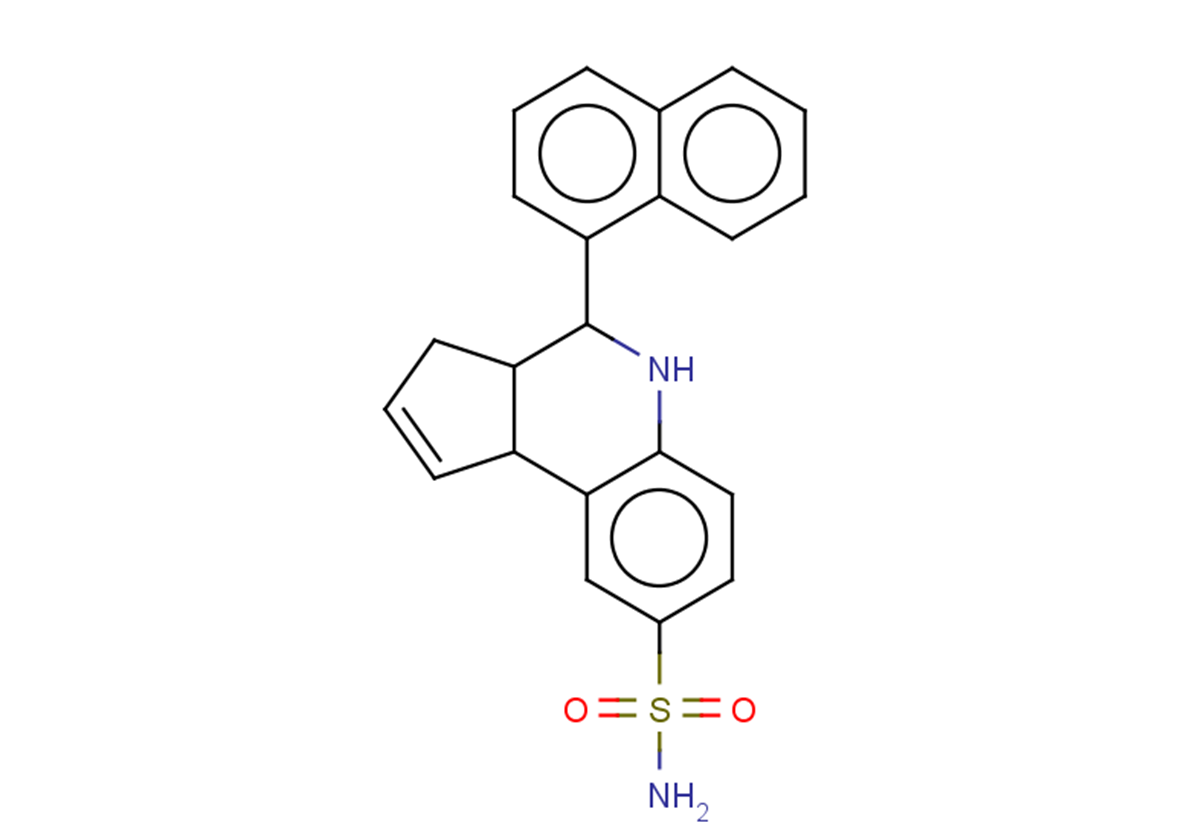
TQS
CAS No. 353483-92-8
TQS( 4-Naphthalen-1-yl-3a,4,5,9b-tetrahydro-3H-cyclopenta[c]quinoline-8-sulfonamide )
Catalog No. M24306 CAS No. 353483-92-8
TQS is a positive allosteric modulator of α7 nACh receptors.
Purity : >98% (HPLC)
 COA
COA
 Datasheet
Datasheet
 HNMR
HNMR
 HPLC
HPLC
 MSDS
MSDS
 Handing Instructions
Handing Instructions
| Size | Price / USD | Stock | Quantity |
| 2MG | 43 | In Stock |


|
| 5MG | 68 | In Stock |


|
| 10MG | 110 | In Stock |


|
| 25MG | 237 | In Stock |


|
| 50MG | 383 | In Stock |


|
| 100MG | 565 | In Stock |


|
| 500MG | 1215 | In Stock |


|
| 1G | Get Quote | In Stock |


|
Biological Information
-
Product NameTQS
-
NoteResearch use only, not for human use.
-
Brief DescriptionTQS is a positive allosteric modulator of α7 nACh receptors.
-
DescriptionTQS is a positive allosteric modulator of α7 nACh receptors.
-
In Vitro——
-
In VivoTQS (1 or 4 mg/kg; i.p.) reduces the expression of LPS-induced IκB mRNA, CD11b mRNA and regulates microglial morphological changes in the hippocampus. Animal Model:Male C57BL/6J miceDosage:1 or 4 mg/kg Administration:I.p.Result:Reduced the expression of LPS-induced IκB mRNA, CD11b mRNA and regulated microglial morphological changes in the hippocampus.
-
Synonyms4-Naphthalen-1-yl-3a,4,5,9b-tetrahydro-3H-cyclopenta[c]quinoline-8-sulfonamide
-
PathwayEndocrinology/Hormones
-
TargetAChR
-
Recptorα7 nAChR
-
Research Area——
-
Indication——
Chemical Information
-
CAS Number353483-92-8
-
Formula Weight376.47
-
Molecular FormulaC22H20N2O2S
-
Purity>98% (HPLC)
-
SolubilityDMSO : 240 mg/mL?(637.50 mM;?Need ultrasonic)
-
SMILESNS(c(cc1)cc(C2C=CCC22)c1NC2c1cccc2ccccc12)(=O)=O
-
Chemical Name——
Shipping & Storage Information
-
Storage(-20℃)
-
ShippingWith Ice Pack
-
Stability≥ 2 years
Reference
1.Muzaffar A , Sami A , Papke R L , et al. The α7 nicotinic acetylcholine receptor positive allosteric modulator attenuates lipopolysaccharide-induced activation of hippocampal IκB and CD11b gene expression in mice[J]. Drug Discoveries & Therapeutics, 2017, 11(4):206-211.
molnova catalog



related products
-
(+)-Pilocarpine hydr...
Pilocarpine hydrochloride is a nonselective muscarinic acetylcholine receptor agonist used to produce an experimental model of epilepsy.
-
VU0238429
VU0238429 is positive allosteric modulator of muscarinic acetylcholine receptor subtype 5 (mAChR5 or M5)( EC50 : 1.16 μM).
-
Decamethonium bromid...
Decamethonium Bromide is a nicotinic AChR partial agonist and neuromuscular blocking agent.



 Cart
Cart
 sales@molnova.com
sales@molnova.com


